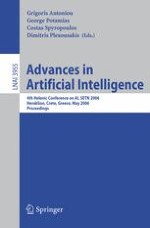2006 | Book
Advances in Artificial Intelligence
4th Helenic Conference on AI, SETN 2006, Heraklion, Crete, Greece, May 18-20, 2006. Proceedings
Editors: Grigoris Antoniou, George Potamias, Costas Spyropoulos, Dimitris Plexousakis
Publisher: Springer Berlin Heidelberg
Book Series : Lecture Notes in Computer Science
